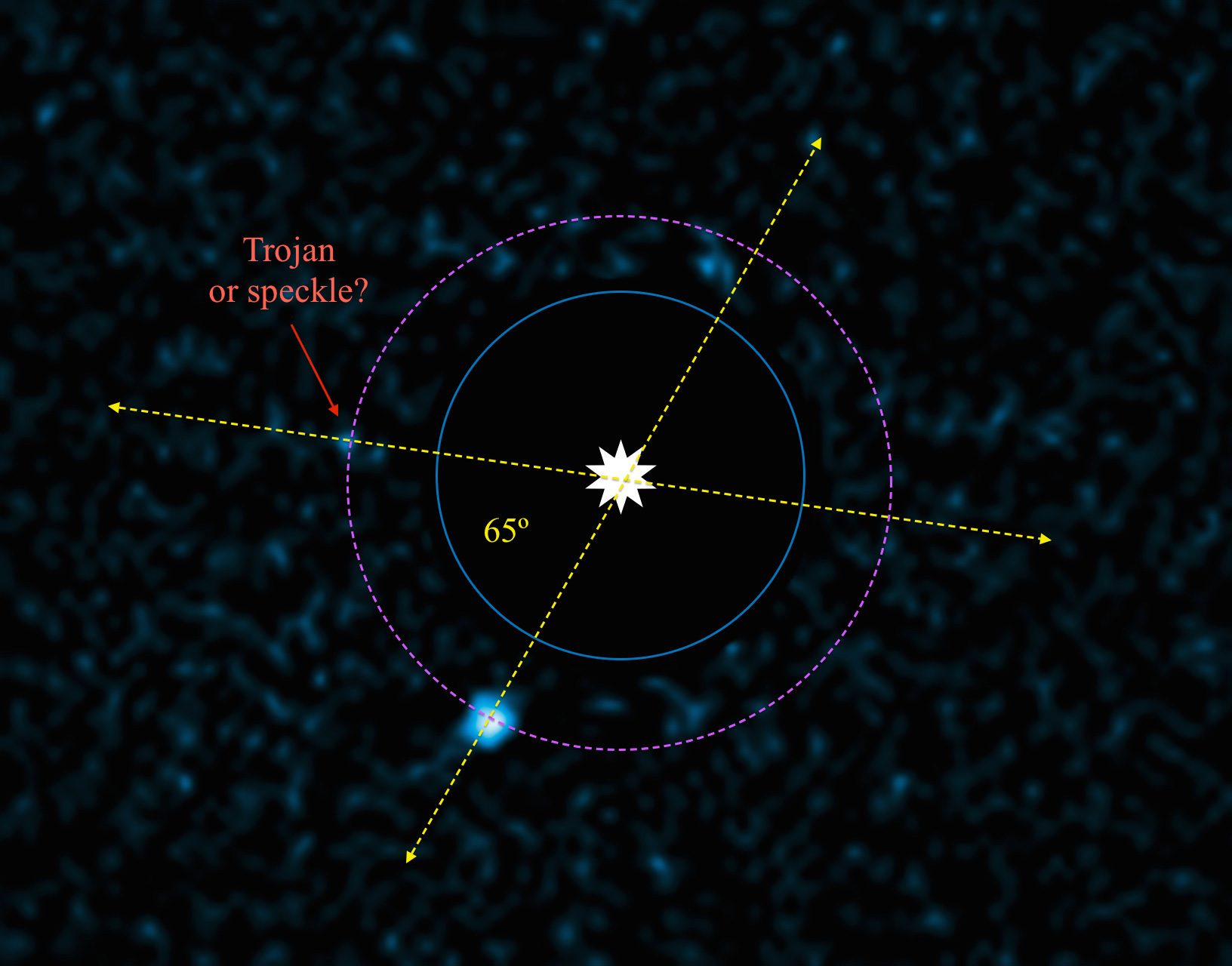OP1: Digging into archival radial velocity data
Use archival data from precise instruments (e.g., HARPS, SOPHIE, HIRES, etc.) to apply the technique proposed by Ford et al. (2006) to look for trojan planets.
- Download list of planets with: mass, radius, period, stellar mass
- Calculate the semi-amplitude of the RV.
- Select those accomplishing all criteria stated in the "Targets" section below.
- Search for archival RV data of the pre-selected targets in the papers published about them.
- Among the targets with sufficient data, fit the RV assuming a single planet (leave eccentricity free).
- Now fit the RV assuming a trojan planet.
- Compare the likelihood of both fits.
- Select those targets in which the fit with the trojan is statistically better ==> Probable detection.
- Publish upper mass limits for those without statistical significance.
- This should be included in the first publication of the project, describing TROY and methodologies (Lillo-Box et al., 2016, in prep.).
- Optional: it would also be great to test the approach of Leleu et al. (2015) on the targets with small eccentricities.
Tarets should accomplish the following criteria:
- Planet host must transit its star: this is in order to have a reference time to compare with the time of null radial velocity.
- Planet host must be massive (Jupiter-like): This is in order to be able to detect the trojan body since the larger the planet is the deeper is the gravity well and so more massive trojans can be hosted.
- Period should not be too short (>5 days): According to Rodriguez et al. (2013), trojans hosted in short-period orbits are likely instable. However, I must note that this paper indicates that their work is valid for similar mass planet-trojan systems. By contrast, we are focusing our search in Jupiter+Earth systems.
- RV semi-amplitude should be large (>50 m/s) : this is necessary to be able to have a good S/N of the RV curve.
These criteria, leaves us with XX targets.
Our currently derived equations assume:
- Trojan body location is fixed at the Lagrangian point (i.e., no libration, dalpha/dt = 0, alpha = 60º). This probably forces the trojan body to be massive and formed in situ, since I would expect a less massive body (like an asteroid) to have been captured and so have a larger libration amplitude.


